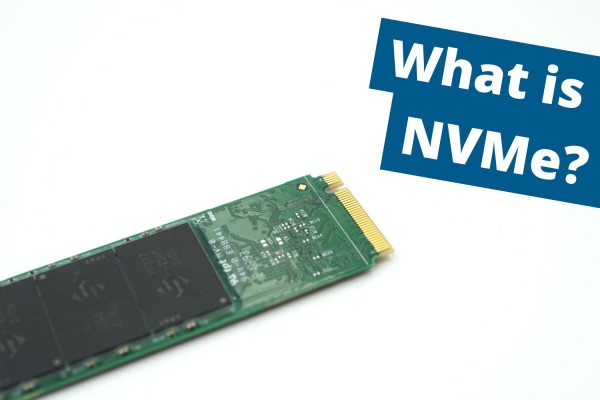The NVMe specification
The Non-Volatile Memory Express (NVMe) is a communication protocol specifically designed to work with flash memory over the PCIe interface. NVMe takes advantage of the parallel nature of solid-state drives, enabling the highest throughput and fastest response times yet for all types of workflows.
NVMe storage is perfect for business scenarios where every second counts. For example, real-time customer interactions in areas such as finance, e-commerce and software sales. But also, applications in artificial intelligence, machine learning, Big Data and advanced analytics.
NVMe over Fabrics
NVMe over Fabrics (NVMe-oF) is an evolution of the NVMe standard. It defines between NVMe device and PC (or the PCIe bus) the level of a network distributor (the "fabric"), so it is possible to detach the mass storage from a computer and thus increase utilization and availability.
Different SSD construction forms
Basically, there are three different designs of SSDs:
- 2.3’’ and 2.5’’
- M.2
- mPCIE
The NVMe is based on the M.2 form factor and is therefore long and slim, whereas the mPCIE SSD is slightly wider and therefore shorter. The 2.5'' (70 x 100 mm) and the 3.5'' SSD (101.6 x 146.05 x 25.4 - 41.4 mm) are the biggest among the three forms and take up the most space in the PC (see image 1, source: computer-bild.de).
Transfer protocols SATA and PCIe
Here we distinguish between SATA and PCIexpress.
The SATA transfer protocol is compatible with all three forms and then has the following designations: 2.5'' SATA connector; M.2 SATA and mSATA. They all transfer at 6Gbit/s, i.e., around 500 mByte/s.
There are different versions of the PCIexpress transfer protocol, starting from 1.0 up to 5.0, they have different speeds in ascending order. An M.2 PCIe always has 4 lanes, which also includes the Non-Volatile Memory Express. An NVMe as found in our spo-comm Mini-PCs transfers with 9.8 GBytes/s, since we are talking about an M.2 PCIe 3.0 with 4 lanes here.
spo-comm Mini-PCs with NVMe:
In the spo-comm product range there are two Mini-PCs that can be equipped with an NVMe SSD. The first in our KUMO VI, the perfect companion for demanding digital signage applications, and the second is our NINETEEN Q370 which is an industrial PC for all cases.
##Configure your KUMO VI








